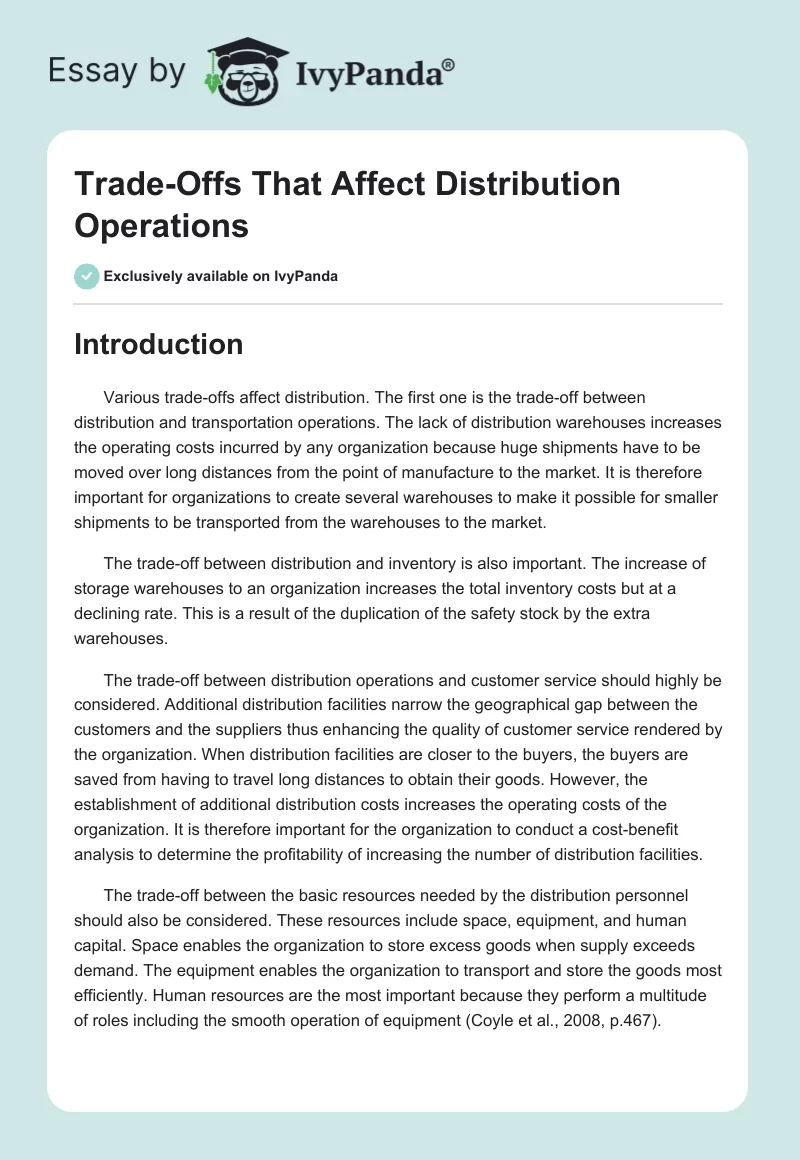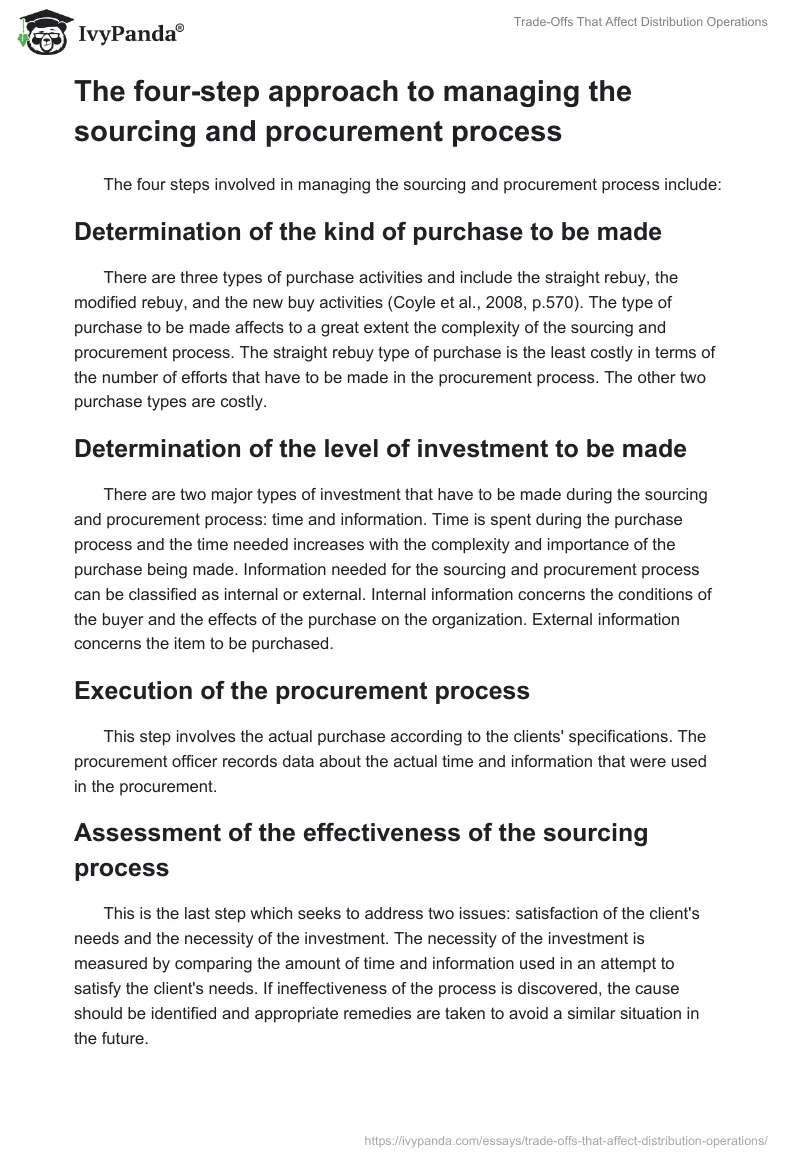Introduction
Various trade-offs affect distribution. The first one is the trade-off between distribution and transportation operations. The lack of distribution warehouses increases the operating costs incurred by any organization because huge shipments have to be moved over long distances from the point of manufacture to the market. It is therefore important for organizations to create several warehouses to make it possible for smaller shipments to be transported from the warehouses to the market.
The trade-off between distribution and inventory is also important. The increase of storage warehouses to an organization increases the total inventory costs but at a declining rate. This is a result of the duplication of the safety stock by the extra warehouses.
The trade-off between distribution operations and customer service should highly be considered. Additional distribution facilities narrow the geographical gap between the customers and the suppliers thus enhancing the quality of customer service rendered by the organization. When distribution facilities are closer to the buyers, the buyers are saved from having to travel long distances to obtain their goods. However, the establishment of additional distribution costs increases the operating costs of the organization. It is therefore important for the organization to conduct a cost-benefit analysis to determine the profitability of increasing the number of distribution facilities.
The trade-off between the basic resources needed by the distribution personnel should also be considered. These resources include space, equipment, and human capital. Space enables the organization to store excess goods when supply exceeds demand. The equipment enables the organization to transport and store the goods most efficiently. Human resources are the most important because they perform a multitude of roles including the smooth operation of equipment (Coyle et al., 2008, p.467).
The four-step approach to managing the sourcing and procurement process
The four steps involved in managing the sourcing and procurement process include:
Determination of the kind of purchase to be made
There are three types of purchase activities and include the straight rebuy, the modified rebuy, and the new buy activities (Coyle et al., 2008, p.570). The type of purchase to be made affects to a great extent the complexity of the sourcing and procurement process. The straight rebuy type of purchase is the least costly in terms of the number of efforts that have to be made in the procurement process. The other two purchase types are costly.
Determination of the level of investment to be made
There are two major types of investment that have to be made during the sourcing and procurement process: time and information. Time is spent during the purchase process and the time needed increases with the complexity and importance of the purchase being made. Information needed for the sourcing and procurement process can be classified as internal or external. Internal information concerns the conditions of the buyer and the effects of the purchase on the organization. External information concerns the item to be purchased.
Execution of the procurement process
This step involves the actual purchase according to the clients’ specifications. The procurement officer records data about the actual time and information that were used in the procurement.
Assessment of the effectiveness of the sourcing process
This is the last step which seeks to address two issues: satisfaction of the client’s needs and the necessity of the investment. The necessity of the investment is measured by comparing the amount of time and information used in an attempt to satisfy the client’s needs. If ineffectiveness of the process is discovered, the cause should be identified and appropriate remedies are taken to avoid a similar situation in the future.
Reference List
Coyle, J.J., Langley, C.J., Gibson, B.J., Novack, R.A., and Bardi, E.J. (2008). Supply chain management: A logistics perspective (8th ed.). Mason, Ohio: South-Western.


